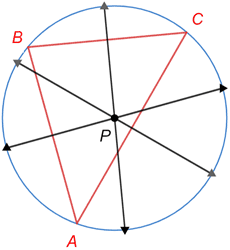Perpendicular bisector
A line, ray, or line segment (referred to as segment) that is perpendicular to a given segment at its midpoint is called a perpendicular bisector. To bisect means to cut or divide the given segment into two congruent segments.
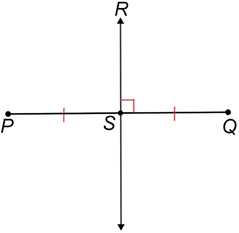
In the diagram above, is the perpendicular bisector of , since is perpendicular to and ≅.
Additionally, since ≅, point S is the midpoint of . has no midpoint since it extends indefinitely in either direction.
Perpendicularly bisecting a line segment using a compass and ruler
In geometry, it is possible to perpendicularly bisect a line segment using only a compass and ruler:
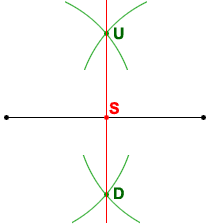
- Using each end of the line segment as centers, begin drawing two circles of equal radius such that the arcs of the circles intersect at two points (U and D in the diagram above), one on each side of the segment.
- Draw a straight line through U and D. This straight line will intersect with the line segment at point S, the midpoint of the segment.
The line is a perpendicular bisector of the line segment. Point S is its midpoint.
Perpendicular Bisector Theorem
The Perpendicular Bisector Theorem states that any point on the perpendicular bisector is equidistant from the segment's endpoints. Let T be on the perpendicular bisector, , below.
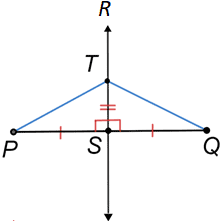
Since is perpendicular to , △PST and △QST are both right triangles. Since = , △PST≅△QST by the Side-Angle-Side Theorem. So, ≅, which makes T equidistant from points P and Q. This is true for any point on .
The converse of the Perpendicular Bisector Theorem states that if a point in the plane is equidistant from the endpoints of a segment, then it must be on the perpendicular bisector of the segment.
Perpendicular bisectors of triangles
The circumcenter of a triangle is the point at which the perpendicular bisectors of each of the triangle's three sides intersect.
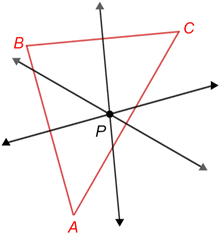
The circumcenter of a triangle is also the center of its circumcircle, which is a circle that passes through the three vertices of the triangle, as shown below.
